Basic Research
Experimental research of superconductors is crucial for understanding the physical mechanisms governing these materials and for developing advanced applications. In particular, studies focusing on nanometer-scale structures and hybrid superconducting systems are essential for exploring and understanding quantum effects, thermal fluctuations, and the influence of geometric boundaries on superconducting properties. Hybrid structures, which combine superconductors with other materials such as ferromagnets or normal conductors, exhibit novel physical phenomena that can be harnessed for advanced electronic devices, including qubits for quantum computing. Additionally, investigating the impact of magnetic fields on superconductors provides critical insights into the formation of magnetic vortices and their role in the superconducting phase transitions. Understanding the interactions between magnetic fields and superconductivity is not only fundamental for advancing our knowledge of these materials but also for improving technological applications, such as high-power magnets and ultra-sensitive sensing systems.
Research Projects:
-Spatial dependence of the superconducting order parameter
- The Effect of Magnetic Fields on Superconducting Resonators
- Kinetic Inductance Detectors based on superconductors
- Quantum effects in superconducting rings
- Dendritic instability in thin superconducting films
- DNA Origami based superconducting nanostructures
- Single-photon detectors based on superconducting nano-structures
- Quantum effects in superconducting rings
- Dendritic flux instability in thin superconducting films
- Spatial dependence of the superconducting order parameter
- DNA-origami-based nano-structures
- Single-photon detectors based on superconducting nano-structures
- High-current applications – SMES and FCLs
- Dynamic Wireless Power Transfer (DWPT) Systems
- Permanent Magnet Fault Current Limiters
Projects run by research students (2018)
Basic Physics
1. Quantum effects in superconducting rings
Research student: Omri Sharon
The critical temperature in a superconducting ring changes periodically with the magnetic flux threading it, giving rise to the well-known Little-Parks magnetoresistance oscillations. Periodic changes of the critical current in a superconducting quantum interference device (SQUID), consisting of two Josephson junctions in a ring, lead to a different type of magnetoresistance oscillations utilized in detecting extremely small changes in magnetic fields. We have recently demonstrated current-induced switching between Little-Parks and SQUID magnetoresistance oscillations in a superconducting nano-ring without Josephson junctions.
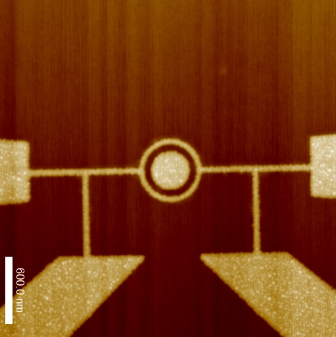
Nb nano-ring for transport measurements
2. Dendritic instability in thin superconducting films
Research student: Elran Baruc-El
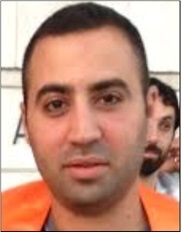
The research deals with the thermomagnetic dendritic flux-instability and its implication on superconducting practical devices. By exploiting a unique ultra-fast magneto-optical imaging system (up to 70,000 frames/sec) and its ultra-fast field sweep rates (up tp 3 kT/s), we are able to explore the conditions for flux stability in superconducting films.
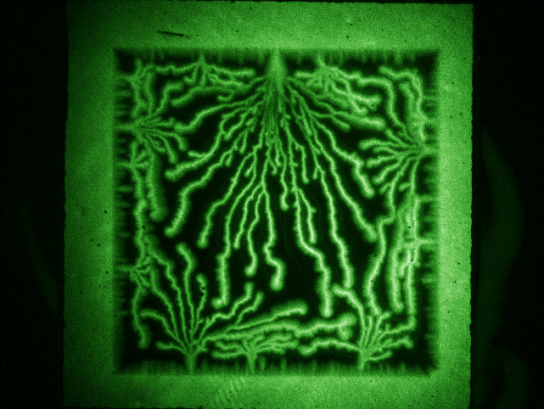
Dendritic flux structure in superconducting YBCO film acquired by our fast
magneto-optical system
3. Spatial dependence of the superconducting order parameter
Research student: Jonathan Shvartzberg

In an effort to study the spatial dependence of the superconducting order parameter we plan using Normal/Insulator/Superconducting junction exhibiting quantum tunneling effect. 'Quantum tunneling' refers to a phenomenon where a particle tunnels through a barrier that it classically cannot occur. It has important applications to modern devices such as the tunnel diode, quantum computing, and the scanning tunneling microscope (STM).
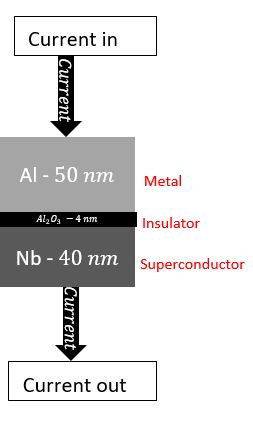
Quantum tunneling schematics Cross section schematics of the NIS junction
For my research project I fabricate a Normal Metal-Insulator-Superconductor (NIS) junctions and measure the electron tunneling as a function of the voltage applied. The fabrication process includes Electron-beam lithography (EBL), Atomic Layer Deposition (ALD), DC-Magnetron sputtering and Electron-beam physical vapor deposition. The right figure shows Scanning Electron Microscope (SEM) image of Al-Al2O3-Nb junction where Al is the normal metal, Al2O3 is the insulator and the Nb is the superconductor.
|
4. DNA Origami based superconducting nanostructures
Research student: Lior Shani

DNA origami is a process of molecular self-folding which result in the formation of a pre-defined nanoscale structures. These nanostructures are addressable with nanometer precision, making them suitable for building precise organization of functional materials. The goal of my research is to fabricate complex 3D superconducting nanostructures exploiting DNA origami as scaffold. Such structures are important for both basic physics (e.g., for the study of quantum fluctuations) and for applications (e.g., for fabricating miniature components for molecular electronics).
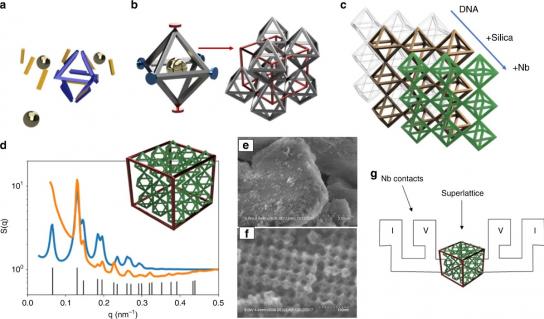
The figure shows the process of fabricating 3D DNA superlattice and its preparation for magneto-transport measurements. For details, see L. Shani et al., DNA-assembled superconducting 3D nanoscale architectures, Nature Communications (2020).
5.Single-photon detectors based on superconducting nano-structures
Research student: Ilan Hakimi

My research concerns the interaction between light and superconductor. The main focus regards the physical mechanisms allowing a nano structured superconductor to become a single photon detector (SNSPD).


SEM image of a superconducting nano-structure sensitive to single photons
6.Applied Physics< >High-current applications – SMES and FCLs
Research student: Yasha Nikulshin

Most renewable energy sources fluctuate over time increasing grid’s instability and decreasing its reliability. Two key technologies are required for renewable energy integration. The Superconducting Magnetic Energy Storage (SMES) and Fault Current Limiter (FCL) (see figure 2). The SMES stores energy in a superconducting coil in the form of DC current and releases it to the grid following the momentary demand delivering stable and clean power to sensitive industries. A crucial parameter for the development of SMES technology is the losses generated in the superconducting wires and coils. Energy is dissipated in the superconductor due to the special operation mode of the coil where the circulating current is a superposition of large DC current and high frequency AC ripple caused by coil switching. For precise measurements of these losses a unique cryogenic setup (see figure 1) was built. The FCL on the other hand is a nonlinear inductive device which increases it's impedance during fault state, utilizing special ferromagnetic properties of the core and limits the current thus protecting the grid. Research and development of such devices requires comprehensive study of different aspects such as thermal, electromagnetic and mechanical simulations, cryogenic setup


![]() Fault Current Limiter, schematic
Fault Current Limiter, schematic
7.Dynamic Wireless Power Transfer (D<WPT) Systems
Research student: John Linden

There is no doubt today that Electric Vehicles (EVs) will play a major role in the way we use transportation in the near future. The only current major obstacle is the energy storage capacity that EVs can offer. An Israeli startup (Electroad Ltd.) has come up with a solution by transferring energy continuously to the EVs not demanded every larger batteries to store the energy. In this project we focused on taking Wireless Power Transfer to the next level by developing dynamic optimization models to improve the coupling factors. Finite Element Analysis (FEA) dynamic magnetic simulations can be used to explore the coupling effects in multi-array wireless power transfer systems, while moving. The development of this technology greatly contributed to the development of an all new electrical vehicle system powered by a DWPT network between the chassis and the road. Similar fields that may benefit is 5G network communications, portable charging, etc.

Simulations of the coupling effects in multi-array wireless power transfer systems
8.Permanent Magnet Fault Current Limiters
Research student: John Linden
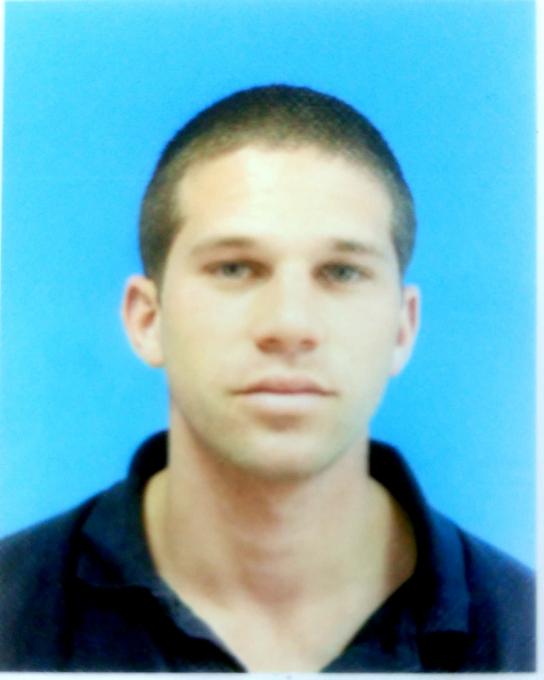
Today's electrical grids are continuously increasing their complexity and power levels, filling the ever increasing needs of us end-users. These upgrade come at an ever increasing cost to maintain reliability and safety of the power grids especially in the cases of short-circuiting fault states. As a solution for allowing higher power electrical grids while providing good level of limiting dangerous current in the case of a fault are Fault Current Limiters (FCLs).Totally passive permanent magnet fault current limiters have been developed and tested on high power electrical grids proving to be a promising and innovative alternative to resistive or superconductive based fault current limiters. Next generation devices will prove extremely valuable for implementation of the global smart grid allowing to higher power to be transmitted to various nodes within the electrical network at low running losses and with high safety standards. These achievements are based on implementing a high level of understanding and analysis in magneto-dynamics and interface magnetic fields between magnetic materials.


Prototype design of Permanent Magnet FCL Fault-Current Limiter capable of limiting 3 phase electrical grid faults.




